Pembrokeshire village has more holiday homes than residents
Residents of a small village fear their community will be lost forever as most of the homes are being used for holiday lets.
Only two out of the 50 properties in Cwm-yr-Eglwys, Pembrokeshire, have permanent residents.
A third is for sale for more than £1m and locals say they are being priced out of the market.
They want to see urgent action to protect coastal communities from the rise in second home ownership.
Cwm-yr-Eglwys is one of the most picturesque villages in Pembrokeshire - a sheltered cove with a ruined church on the foreshore, echoing a sea-faring past and a time when sea captains and their families, fishermen and farmers all lived in the village and surrounding area.
In recent times, it has become hugely popular as a holiday destination, with the Pembrokeshire coastal path running directly through the village.
There is a small caravan park and about 50 properties, which by now are nearly all holiday homes.
There is not much else here - no shop, no pub - only an ice cream kiosk in high season. In winter, the place is deserted but in summer, it is bustling with tourists.
But locals say the community has been lost as each house in turn has become a holiday home.
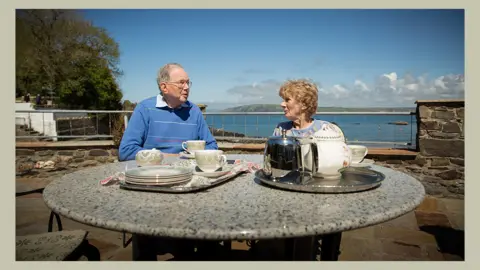 BBC
BBCKeith Battrick is a councillor with Dinas Cross community council. He lives nearby and has seen the area change in the 50 years or so since he moved here from Bridgend.
"It's a summer village - winter time it's completely dead. No-one here, just the odd walker - that's it," he said.
"So it's a sad village really and probably will never change. It makes me sad that the local indigenous community can't afford to live here.
"Local children - my son included - who want to move back here, find it hard. Within 10 years there probably won't be anyone local living here - the future of Cwm-yr-Eglwys is as a holiday place."
Of the three properties still lived in all year, one is on the market for £1.3m and the other two are home to people in their 80s.
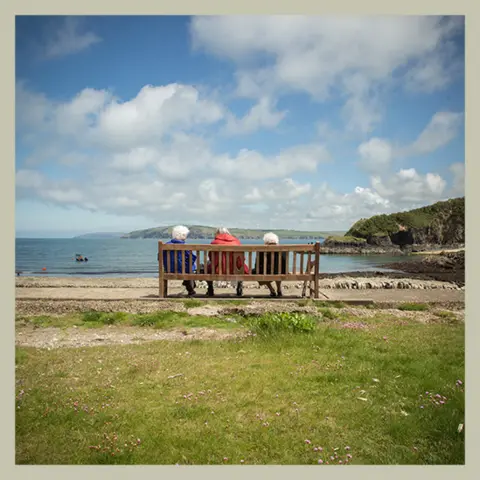 BBC
BBCNorman Thomas's house sits on the water's edge, overlooking the beach. It was the home he shared with his wife and four children.
He is 88 years old and also the only remaining Welsh speaker in the village and said the language would disappear entirely after his time.
"All those houses through the valley have been sold to English people," he said.
"I'm not against them - they bring work here. I get on with them all. But it's sad that the Welsh can't afford these houses.
"That house over there is on the market for £1.3m. It's ridiculous. The government should have stepped in and stopped these high prices.
"We've got to accept this is what it's coming to - there are lots of little places like Cwm-yr-Eglwys - nothing left - there isn't even a pub here."
The only other permanent residents are the Broughtons - Elizabeth and Harry who are 80 and 85.
Originally from Lancashire, they came on holiday to Cwm-yr-Eglwys in the 1960s and fell in love with the place.
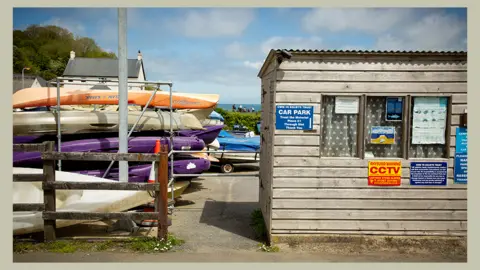 BBC
BBCWhen the opportunity came to buy a house in the village, they jumped at the chance.
Twenty years ago, they moved here permanently and said they did not mind the village being full of holiday homes - it means there are usually people around and they have seen their investment grow beyond all expectation.
"We get notes through the door, asking can they rent it or are we selling," explained Elizabeth.
"Our family would like to keep it but it comes down to pounds, shillings and pence. We are sitting on a goldmine here, no question about it. Very few houses come for sale here so they're pretty sought after."
House prices in Pembrokeshire have risen more than 5% in the past year, with the average home in the county costing £225,000, well above the Welsh average.
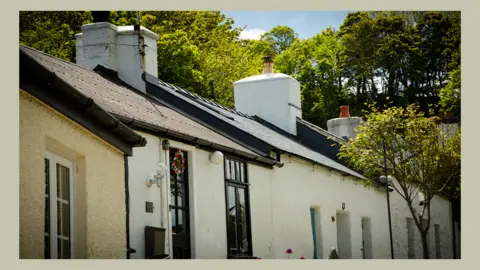 BBC
BBCEstate agents are reporting a surge in demand for rural and coastal properties as people emerge from the pandemic, looking for a new way of life.
Pembrokeshire also has the second highest number of second homes in Wales - about 9% of the county's housing stock.
People say all this is not only creating an impossible challenge for those trying to get on to the property market, but also that whole communities are now under threat.
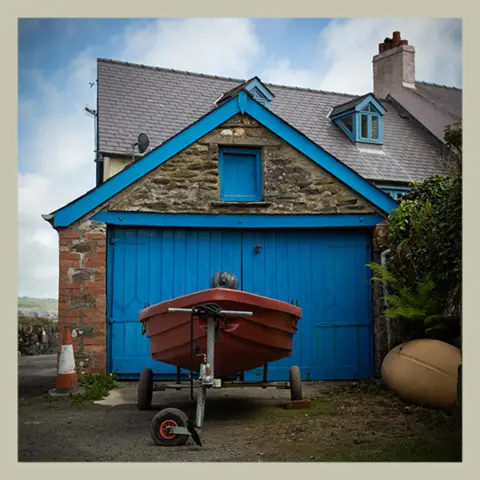 BBC
BBCMr Battrick said more villages and communities like Cwm-yr-Eglwys would be lost unless action is taken to tackle the issue.
"It all goes back to Welsh government - really they should sit down and think really hard about what is happening to villages in Pembrokeshire and all through Wales.
"We will end up eventually with villages like Cwm-yr-Eglwys where there are no local people left living in them and that time is coming quickly I think."
A Welsh government spokesman, said: "A large number of second homes in a local community can have a real impact on that community.
"Wales is the only UK nation to give local authorities powers to charge higher levels of council tax on both long-term empty properties and second homes. The decision to apply and increase council tax premiums rests with local authorities.
"We've also increased the higher rate of land transaction tax, which applies when people buy an additional property. We are looking at what further interventions are available and how our partners can use existing powers."
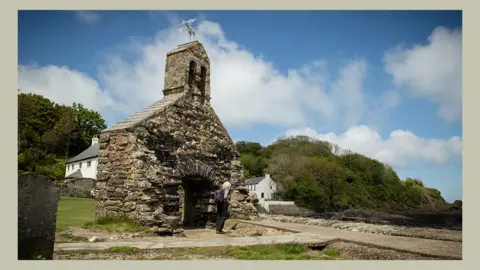 BBC
BBCBob Kilmister, Pembrokeshire council cabinet member for finance said the second homes council tax premium - introduced on 1 April 2017 - meant such owners were charged an extra 50% on top of their usual rates.
"The funds are used to increase the supply of affordable housing and enhance the sustainability of local communities."
Photography by Nick Hartley
